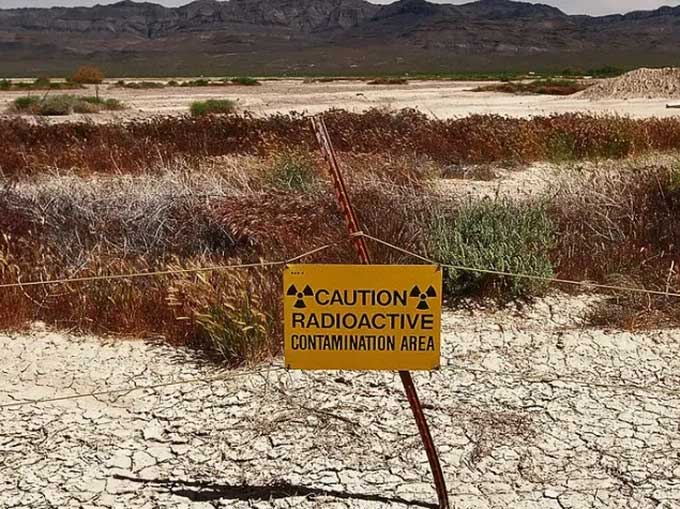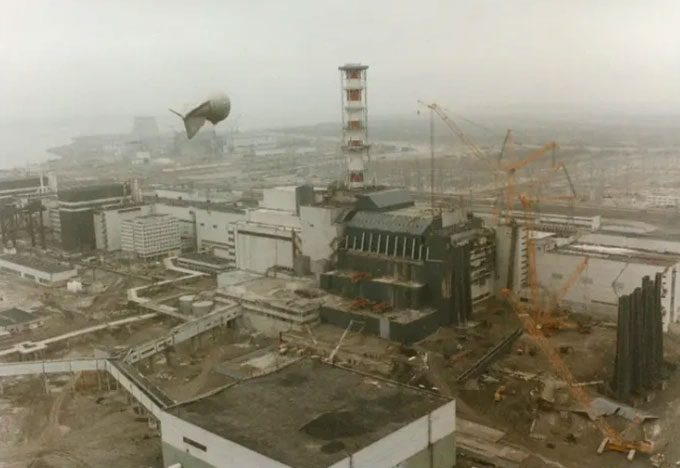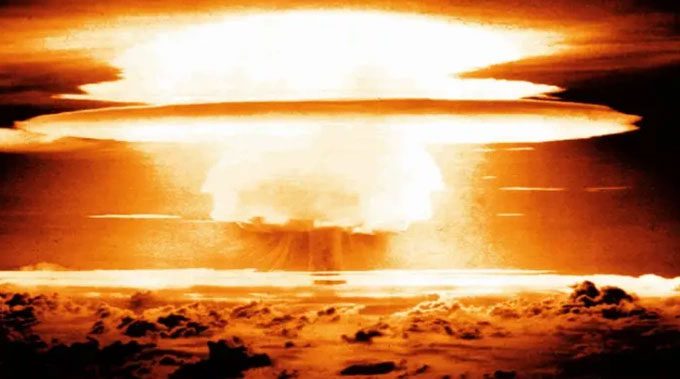Radiation dust can even enter through the food and drink route, leaving serious impacts.
Surprising Facts About Radiation Dust
- Radiation dust can exist in the atmosphere for many years
- Even the ocean floor is contaminated with radiation dust
- Radiation traces
- Food is a primary source of human exposure to radiation dust
- Dust from bomb explosions is less dangerous than leaks from nuclear power plants
- Only about 15% of the energy released from atomic bombs is from nuclear radiation
Radiation Dust Can Exist in the Atmosphere for Many Years

The nuclear device explosion “Seminole” on Enewetak Atoll in the Pacific on June 6, 1956. (Photo: CORBIS/Getty Images).
Nuclear explosions generate extremely dangerous nuclear dust. Remaining nuclear materials are released into the air, gradually cooling into dust and eventually falling to the ground, poisoning everything it passes through.
Most radiation dust from nuclear explosions falls to the ground within one day to one week, according to nuclear physicist Zaijing Sun from the University of Nevada, Las Vegas, USA. However, a small portion of radiation dust can rise high into the atmosphere, reaching over 70 km, and remain airborne for years before settling down.
Even the Ocean Floor is Contaminated with Radiation Dust

Researchers have found evidence of radiation dust in the muscle tissues of marine organisms living in the deepest seas. (Photo: Alcatel Submarine Networks).
Radiation dust can travel far in the stratosphere due to winds and weather patterns. Therefore, if a nuclear bomb explodes in the United States, the radiation dust could reach as far as Russia, Europe, and China. It is a global event, not just a regional one.
For instance, scientists have discovered radiation dust from nuclear tests worldwide, from Tunisia to Arctic glaciers, and even in the deepest parts of the ocean floor, infiltrating the tissues of some crustaceans living in ocean trenches.
Radiation Traces

Warning sign near a bomb testing site in Nevada. (Photo: Ted Soqui).
Between 1950 and 1970, the U.S. government conducted over 500 atmospheric nuclear bomb explosions. Radiation dust released from the Nevada test site and many other testing locations flooded the atmosphere with radioactive isotopes. As a result, nearly all residents living in the U.S. since 1951 have been exposed to at least some of those tests. This is the finding of research from the National Cancer Institute and the Centers for Disease Control and Prevention (USA).
However, scientists believe that the health risk to most people is relatively low. A study indicated that radiation dust may have caused 11,000 cancer deaths.
Food is a Primary Source of Human Exposure to Radiation Dust

Radioactive isotopes can infiltrate cow’s milk. (Photo: Getty Images).
Radiation dust can settle on skin as a means of exposure, but another less noticed route is through food and drink. For example, radiation dust from the Nevada test site led some people in Wyoming to ingest strontium found in food milk.
Here, strontium refers to radioactive isotope strontium-90. Dairy cows grazing on contaminated grass produce milk tainted with this substance, resulting in human consumption of contaminated milk. Strontium-90 can cause intestinal diseases. Due to its chemical structure similar to calcium, it can “trick” your bones into absorbing it. This can lead to bone cancer, bone marrow cancer, and soft tissue around bones.
Dust from Bomb Explosions is Less Dangerous than Leaks from Nuclear Power Plants

Chernobyl Nuclear Power Plant after the explosion on April 26, 1986, Ukraine. (Photo: Getty Images).
A nuclear reactor releases more radioactive isotopes during a meltdown compared to a nuclear bomb explosion. For instance, the Chernobyl disaster released radiation ten times greater than the atomic bombing of Hiroshima during World War II.
Today, radiation levels in Hiroshima have returned to normal background radiation levels worldwide, but in Chernobyl, some elements with longer half-lives, such as Strontium-90 and Cesium-137, still exist at high levels.
Only About 15% of Energy Released from Atomic Bombs is from Nuclear Radiation

Only 15% of the energy from nuclear weapons is generated from nuclear radiation. (Photo: internet).
Physicist Sun from the University of Nevada states: “I think in the imagination of most people, they are very concerned about radiation dust, but remember that most of the energy from an atomic bomb is released instantly.”
About 35% of that energy comes from thermal radiation, and 50% is explosive energy. Only 15% of the energy from nuclear weapons is derived from nuclear radiation, with a significant portion of this 15% being released in the first minute of the explosion.
Stating this does not mean that radiation dust is not dangerous, but the greatest damage we can estimate so far is due to the immediate explosive force of the blast.





















































